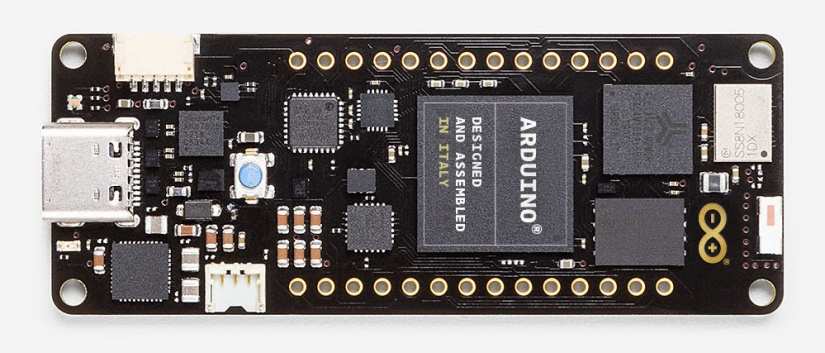Arduino Portenta H7 Module - Simple IoT App Development
Arduino microcontrollers are popular from everything from blinking LEDs and creating do-it-yourself (DIY) projects to industrial robotics and Internet of Things (IoT) applications. On Jan. 7, 2020, Arduino debuted an innovative method for simple IoT app development.
Arduino Portenta H7 Module - Simple IoT App Development
 Constantly at the forefront of both hobbyist and professional maker technology, Arduino has partnered with the likes of Intel, Google, Microsoft, and ARM. As such, there's an emphasis on app development. Seeking to streamline IoT app development, Arduino's comprehensive solution fuses a low-code app development platform with modular hardware. Thus, iterative development is possible, with a speedy method to securely connect and control remote sensors and business logic, all from within an easy-to-use Internet of Things app development platform. Onboard, Arduino hardware touts connected device protocols such as Wi-Fi, Bluetooth Low Energy (BLE), NB-IoT, Cat-M, and LoRa ensuring low-power IoT capabilities.
Constantly at the forefront of both hobbyist and professional maker technology, Arduino has partnered with the likes of Intel, Google, Microsoft, and ARM. As such, there's an emphasis on app development. Seeking to streamline IoT app development, Arduino's comprehensive solution fuses a low-code app development platform with modular hardware. Thus, iterative development is possible, with a speedy method to securely connect and control remote sensors and business logic, all from within an easy-to-use Internet of Things app development platform. Onboard, Arduino hardware touts connected device protocols such as Wi-Fi, Bluetooth Low Energy (BLE), NB-IoT, Cat-M, and LoRa ensuring low-power IoT capabilities.
Arduino CEO Fabio Violante revealed that “By combining the power and flexibility of our production-ready IoT hardware with our secure, scalable and easy to integrate cloud services we are putting in the hands of our customers something really disruptive. Among the millions of Arduino customers, we’ve even seen numerous businesses transform from traditional ‘one-off’ selling to subscription-based service models, creating new IoT-based revenue streams with Arduino as the enabler. The availability of a huge community of developers with Arduino skills is also an important plus and gives them the confidence to invest in our technology.”
Arduino Portenta H7 Module First Look

On the hardware side, Arduino revealed its Arduino Portenta H7 module. This beefy yet low-power consumption device is aimed at artificial intelligence (AI) solutions and robotics. It's powered by dual-core Arm Cortex-M7 and Cortex-M4 processors respectively clocked at 480MHz and 240MHz.
The Altium Designer and the Altium 365 Cloud Platform serve as catalysts for speeding up application deployment. Altium provides a slew of different assets for design, ranging from schematics and footprints to component symbols. Now, creators don't need to create everything from scratch. Moreover, Arduino is slated to support the Poretnat H7 with its Arduino code running on the Arm Mbed open-source operating system. This affords a simple but robust front-end.
STMicroelectronics Ecosystem Marketing Manager Laurent Hanus commented that “The Arduino Portenta H7 combines the outstanding performance, flexibility, and features of the STM32H747 with the value and usability of the new Arduino IoT application development platform (Arduino IoT cloud, Pro IDE with cloud integration, IoT UI editor), to help SME simplify the creation and deployment of their custom connected products."















































Leave your feedback...